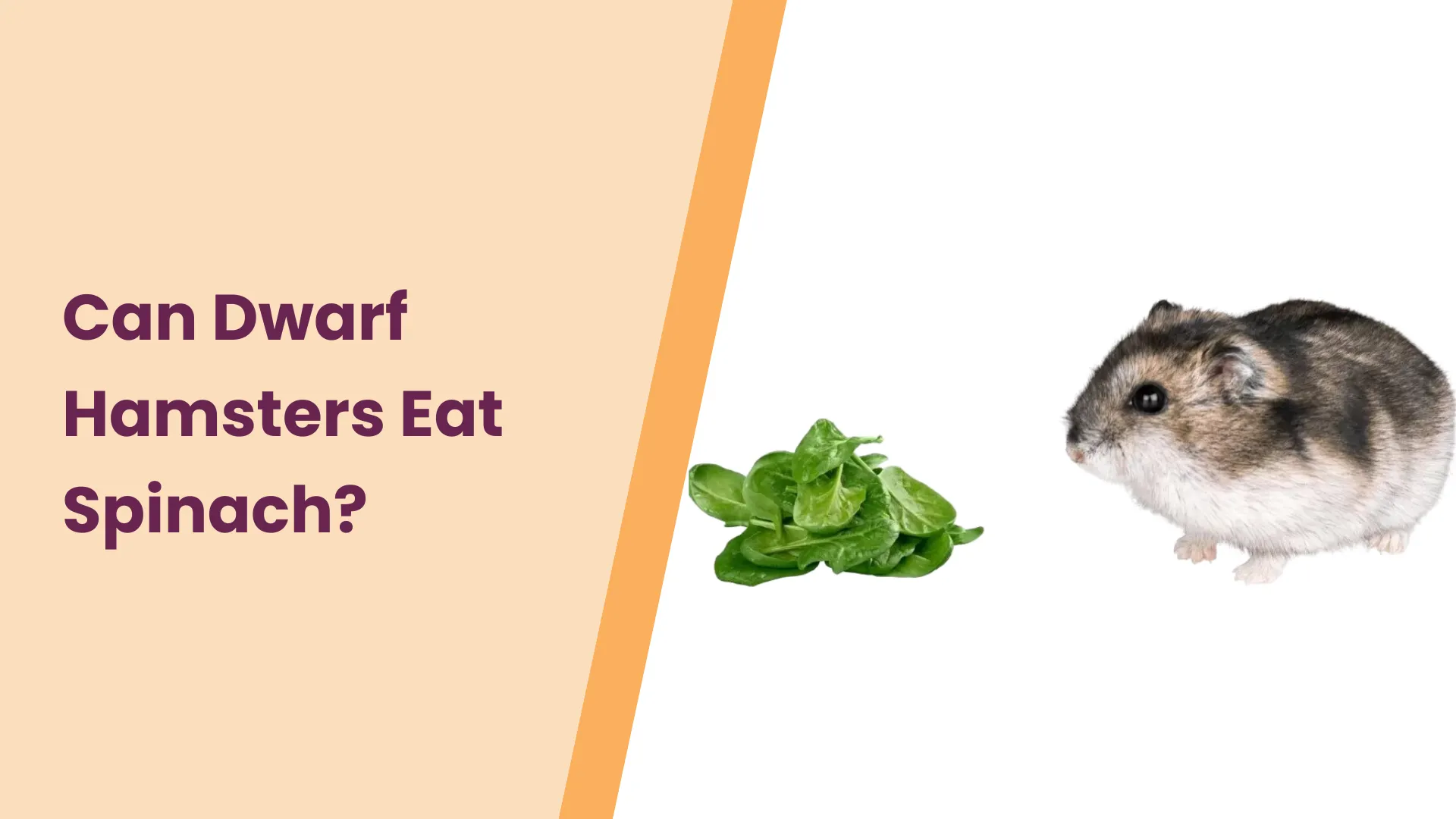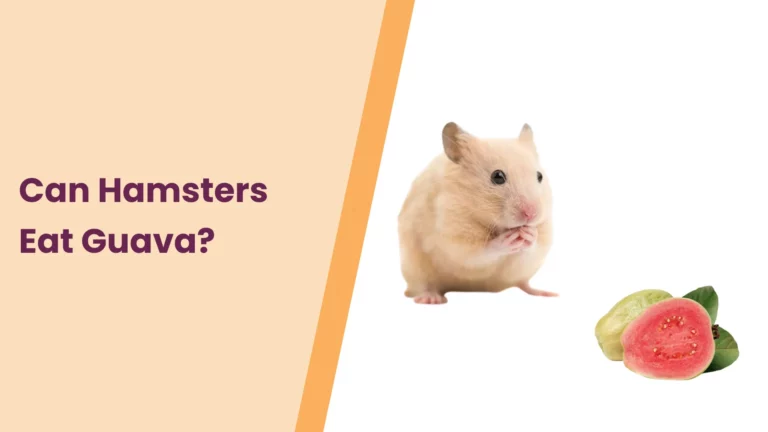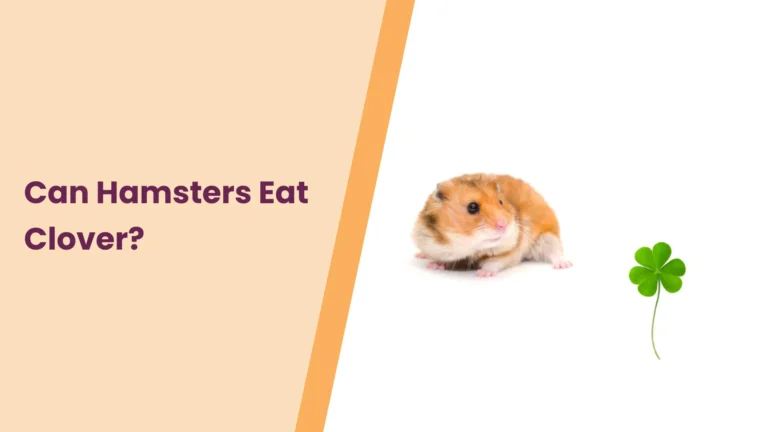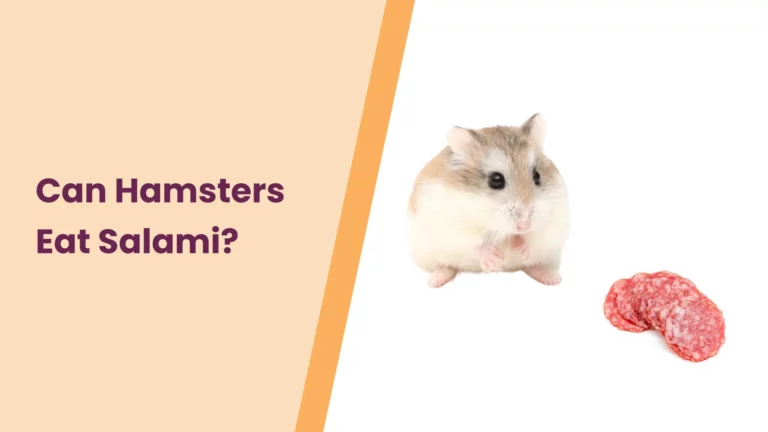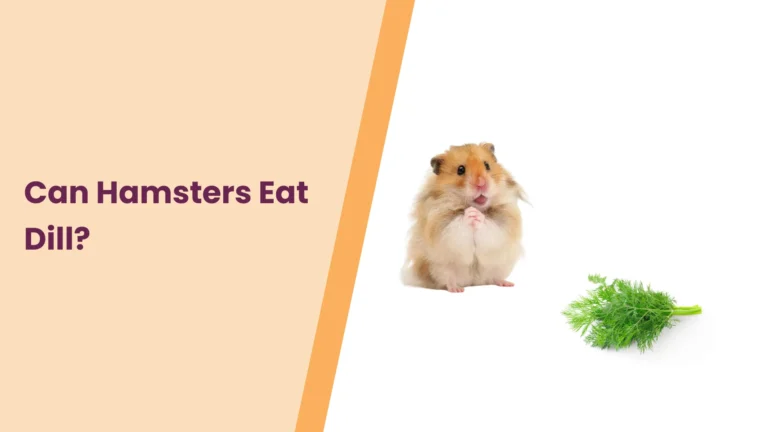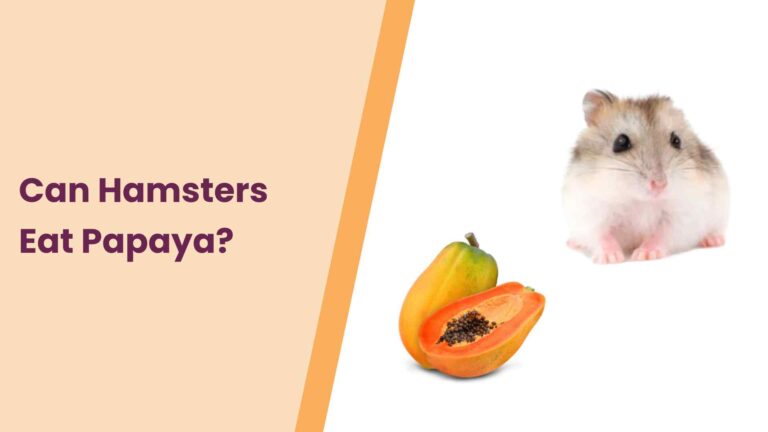Can Dwarf Hamsters Eat Spinach? – An Ultimate Guide
Are you a devoted dwarf hamster parent, always on the lookout for the best ways to care for your tiny, furry friend? When it comes to your beloved hamster’s diet, questions often arise about what’s safe and healthy to feed them. Spinach, a leafy green superfood for humans, raises the curiosity of many hamster owners.
Can these miniature pets munch on this nutrient-packed vegetable too? Join us on a journey into the world of dwarf hamster nutrition, as we explore the tantalizing topic of “Can Dwarf Hamsters Eat Spinach?” We’ll unravel the mysteries, shed light on the dos and don’ts, and ensure your tiny companion leads a happy and healthy life.
So, let’s dive in and discover whether spinach is a scrumptious delight or a potential dietary dilemma for your pint-sized pals.
Understanding Dwarf Hamster Diet
Dwarf hamsters may be small, but their nutritional needs are nothing to be underestimated. Just like any other pet, they rely on a well-balanced diet to thrive and lead a happy, healthy life. To provide the best care for your tiny companion, it’s essential to comprehend what makes up the ideal diet for dwarf hamsters.
Dwarf hamsters are omnivores, which means they enjoy a varied diet consisting of both plant and animal-based foods. In the wild, their diet might include seeds, grains, insects, and some vegetables. However, when caring for them in captivity, it’s crucial to replicate this diverse diet to ensure they receive all the necessary nutrients. Balancing their diet is the key to their well-being.
Offer them a mix of commercial hamster pellets, fresh vegetables, and a smaller portion of high-quality hamster mix. These specially formulated pellets are designed to meet the dietary needs of your hamster, providing a solid foundation of essential nutrients.
Fresh vegetables are a fantastic addition, providing vitamins and fiber. Nonetheless, not all vegetables are created equal, and that’s where the spinach question comes into play. It’s important to remember that while some veggies are great, others may be harmful.
Nutritional Value of Spinach
Spinach, a leafy green vegetable, has gained its reputation as a nutritional powerhouse among humans. Packed with vitamins, minerals, and antioxidants, it’s a go-to choice for those seeking a healthier diet.

But what about our pint-sized pals, the dwarf hamsters? Let’s delve into the nutritional content of spinach and see if it can offer the same benefits to them.
Vitamins and Minerals: Spinach is brimming with essential vitamins and minerals. It’s a rich source of vitamin A, which supports vision and immune function. Additionally, it provides a healthy dose of vitamin C, which boosts the immune system and helps in the absorption of iron. For our little friends, these vitamins play a significant role in maintaining their well-being.
Fiber: Spinach is packed with dietary fiber, which aids in digestion and keeps things moving smoothly in the digestive tract. This can be beneficial for hamsters, as proper digestion is crucial for their overall health and comfort.
Antioxidants: Antioxidants found in spinach, such as beta-carotene and lutein, are renowned for their potential health benefits. They help protect cells from damage and reduce the risk of chronic diseases. While hamsters don’t have the same concerns as humans, antioxidants may still contribute to their overall vitality.
However, before rushing to introduce spinach into your hamster’s diet, it’s crucial to weigh the pros and cons. Spinach contains certain compounds, like oxalates, that can have adverse effects if consumed excessively. We’ll explore these factors in detail to help you make informed decisions about incorporating spinach into your dwarf hamster’s meals.
Can Dwarf Hamsters Eat Spinach?
The big question on every dwarf hamster owner’s mind: can these little critters safely munch on spinach? Let’s address this head-on to ensure the well-being of your beloved pets.
Yes, They Can! Dwarf hamsters can indeed eat spinach, and it can be a part of their diet. Spinach offers a range of nutrients, as we discussed in the previous section, making it a potentially healthy addition. However, like many things in life, the key is moderation.
Moderation is the Key: While spinach is safe for dwarf hamsters, it’s crucial to feed it in moderation. This holds true for most vegetables in their diet. Spinach contains oxalates, which, if consumed excessively, can interfere with calcium absorption and potentially lead to kidney stones. To avoid this, limit spinach servings to small, occasional portions.
Serving Size: For a dwarf hamster, a tiny piece of spinach, roughly the size of their paw, once or twice a week should suffice. Remember, their tummies are minuscule, and a little goes a long way.
Observation is Key: As responsible pet owners, it’s essential to keep a watchful eye on your hamster when introducing new foods, including spinach. Every hamster’s tolerance can vary, and some may have a more sensitive digestive system than others. If you notice any adverse reactions, such as diarrhea or refusal to eat, discontinue the spinach and consult with a veterinarian.
In summary, spinach can be a nutritious and tasty treat for your dwarf hamster, but it should be offered in moderation and alongside a well-balanced diet. This approach ensures that your tiny companion reaps the benefits of this leafy green without any potential drawbacks.
The Importance of Moderation
When it comes to feeding your dwarf hamster, moderation is the golden rule. This principle applies not only to spinach but to all aspects of their diet. Let’s delve into why moderation is crucial for the well-being of your tiny companion.
Balanced Diet: A balanced diet is the foundation of your dwarf hamster’s health. While spinach can be a nutritious addition, it should not dominate their menu. Think of their diet as a well-orchestrated symphony, where each ingredient plays a vital role. Providing a variety of foods ensures they receive a broad spectrum of nutrients, promoting their overall health.
Oxalates and Kidney Health: As mentioned earlier, spinach contains oxalates. These compounds, when consumed excessively, can interfere with calcium absorption and potentially lead to kidney stones. By feeding spinach in moderation, you reduce the risk of these complications and help safeguard your hamster’s kidney health.
Preventing Digestive Issues: Dwarf hamsters have delicate digestive systems. Introducing new foods or overfeeding vegetables like spinach can lead to digestive distress, such as diarrhea or bloating. Moderation minimizes the risk of such issues, keeping your pet comfortable and happy.
Small Tummies: It’s easy to forget that dwarf hamsters are, well, tiny. Their stomachs are proportionate to their size, so even a small portion of spinach can be quite filling for them. Overfeeding can lead to them missing out on other essential nutrients they need from their primary diet.
By offering spinach in measured amounts and alongside other appropriate foods, you ensure that your dwarf hamster enjoys the benefits of this leafy green without the potential downsides. Remember, responsible feeding is the key to a happy and healthy hamster.
Safe Alternatives
While spinach can be a wholesome treat for your dwarf hamster when offered in moderation, there are other vegetables that may be better suited to their dietary needs. Here, we’ll explore some safe and delicious alternatives to spinach.
1. Leafy Greens: Leafy greens such as lettuce, kale, and Swiss chard can make excellent additions to your hamster’s diet. These greens are typically lower in oxalates than spinach, reducing the risk of kidney stone formation.
2. Broccoli Florets: Broccoli florets, in small amounts, can provide a tasty and nutrient-rich addition to your hamster’s menu. These florets are rich in vitamin C, which supports their immune system.
3. Carrots: Carrots are a crunchy and vitamin-packed option that most hamsters adore. They’re a good source of beta-carotene, essential for maintaining eye health.
4. Bell Peppers: Bell peppers, with their vibrant colors, offer a delightful and vitamin-rich choice. They are a good source of vitamin C and add variety to your hamster’s diet.
5. Cucumber Slices: Cucumber slices are hydrating and low in oxalates, making them a refreshing snack for your dwarf hamster.
Remember that even with these safe alternatives, moderation remains vital. Just like with spinach, you should introduce these alternatives gradually and in small portions to ensure your hamster’s digestive system can adapt. Keep an eye on their reactions, and if they show any signs of discomfort or disinterest, adjust their diet accordingly.
Preparing Spinach for Dwarf Hamsters
Now that we’ve established that spinach can be a part of your dwarf hamster’s diet in moderation, let’s explore the best practices for preparing and serving this leafy green to ensure it’s safe and enjoyable for your tiny companion.
1. Wash Thoroughly: Before serving spinach, always give it a good rinse under running water. This step is essential to remove any potential pesticides or contaminants that may be present. Your hamster deserves a clean and safe meal.
2. Chop into Small Pieces: Hamsters have small mouths, so it’s best to chop the spinach into tiny, manageable pieces. This makes it easier for them to nibble on and reduces the risk of choking.
3. Serving Size: As we’ve emphasized before, moderation is key. Offer a piece of spinach no larger than your hamster’s paw, once or twice a week. This portion size ensures they get a taste of this leafy green without overloading their diet with oxalates.
By following these steps, you can provide your dwarf hamster with spinach that’s clean, appropriately sized, and served in a way that enhances their dining experience. Now, you have the knowledge and tools to offer this leafy green responsibly as a part of their diet. As we conclude this discussion on spinach, remember that a diverse and balanced diet is the key to keeping your dwarf hamster content and healthy. In the next section, we’ll wrap up our journey through the world of dwarf hamster nutrition and reiterate the essentials of responsible pet ownership.
Signs of Overfeeding Spinach
While spinach can be a healthy addition to your dwarf hamster’s diet when offered in moderation, it’s essential to be vigilant for signs of overfeeding or potential dietary issues. Here are some indicators to watch out for:
1. Diarrhea: Loose, watery stools are a common sign of overfeeding or digestive upset. If you notice your hamster experiencing diarrhea after spinach consumption, it’s a clear signal to reduce or eliminate spinach from their diet.
2. Decreased Appetite: If your dwarf hamster suddenly loses interest in their regular food or exhibits a decreased appetite after eating spinach, it could be a sign of digestive discomfort. Consider adjusting their diet accordingly.
3. Lethargy: Overfeeding can lead to feelings of discomfort and lethargy in hamsters. If you observe your pet becoming unusually inactive, it may be linked to their diet. Monitor their energy levels and seek advice from a veterinarian if needed.
4. Weight Loss: Significant or sudden weight loss can be indicative of a problem with your hamster’s diet. If you notice your pet shedding pounds, it’s essential to investigate the potential causes, including their spinach consumption.
5. Gastrointestinal Distress: Be on the lookout for signs of abdominal discomfort, such as bloating, gassiness, or other gastrointestinal distress. If your hamster appears to be in pain or discomfort, it’s time to reevaluate their diet and spinach intake.
6. Disinterest in Food: If your dwarf hamster turns up their nose at their regular food after spinach consumption, it may be a response to an upset stomach. Ensure that their diet is well-balanced and that they return to their regular eating habits.
Remember that every hamster is unique, and individual tolerances may vary. If you notice any of these signs, it’s crucial to respond promptly by adjusting their diet, reducing or eliminating spinach, and consulting with a veterinarian if the issues persist.
Our goal is to ensure that your dwarf hamster enjoys a balanced and nutritious diet, free from any discomfort or health concerns. As we conclude our exploration of spinach and its role in your hamster’s nutrition, we’ll summarize the key takeaways and offer a reminder of the responsible pet ownership practices that can lead to a happy and healthy pet.
Conclusion
In our journey through the world of “Can Dwarf Hamsters Eat Spinach,” we’ve uncovered the ins and outs of this leafy green in your furry friend’s diet. While spinach can be a nutritious addition, moderation is the key to ensuring their well-being. Remember, these tiny creatures have delicate digestive systems, and balance is the secret to their happiness and health.
Responsible pet ownership calls for a diverse and well-rounded diet. Rotate spinach with other safe vegetables, and keep an eye on your hamster’s reactions. If signs of discomfort arise, adjust their diet accordingly and consult a veterinarian if needed.
Now armed with the knowledge to provide your dwarf hamster with a wholesome diet, you can embark on a journey to keep them content, thriving, and full of life. By maintaining a balanced menu, observing their responses, and ensuring they receive a mix of nutrients, you’ll be on the right track to being the best hamster parent possible.
Your tiny companion relies on you for their care, and with your dedication and responsible choices, you can provide them with a life full of joy, health, and delicious snacks, even the occasional spinach leaf. Thank you for joining us on this exploration of dwarf hamster nutrition. Happy pet parenting!
“We value your insights and experiences as fellow dwarf hamster enthusiasts. If you have any questions, thoughts, or stories to share, don’t hesitate to leave a comment below. Your comments are a valuable part of our community, and they can provide solutions or insights for other readers.
Share your thoughts on spinach, your dwarf hamster’s favorite treats, or any other topic you’d like to discuss. Feel free to share this article on your social media platforms to spread the word about responsible hamster care. Let’s build a vibrant community where we can all learn, grow, and ensure the well-being of our pint-sized pals. Your engagement is the heart of our blog, and we look forward to hearing from you!” – Hamsterpit.

